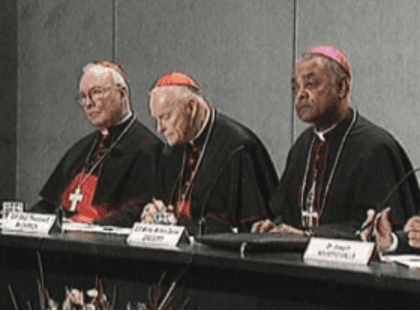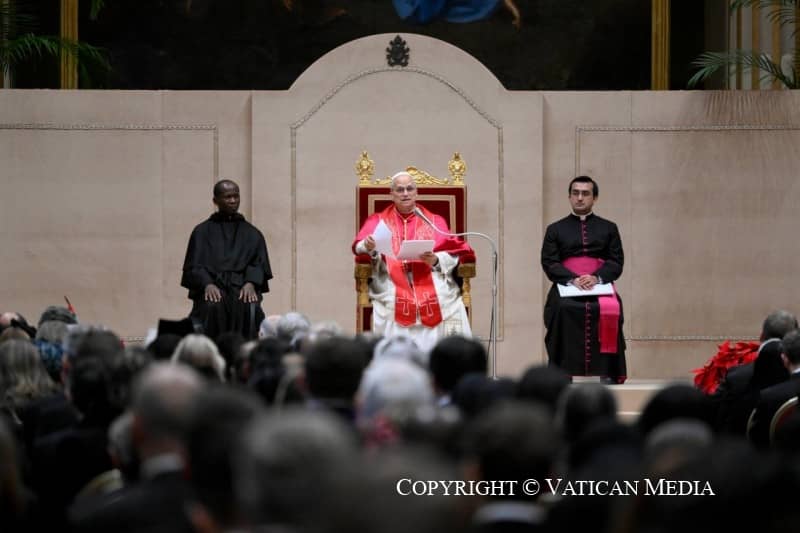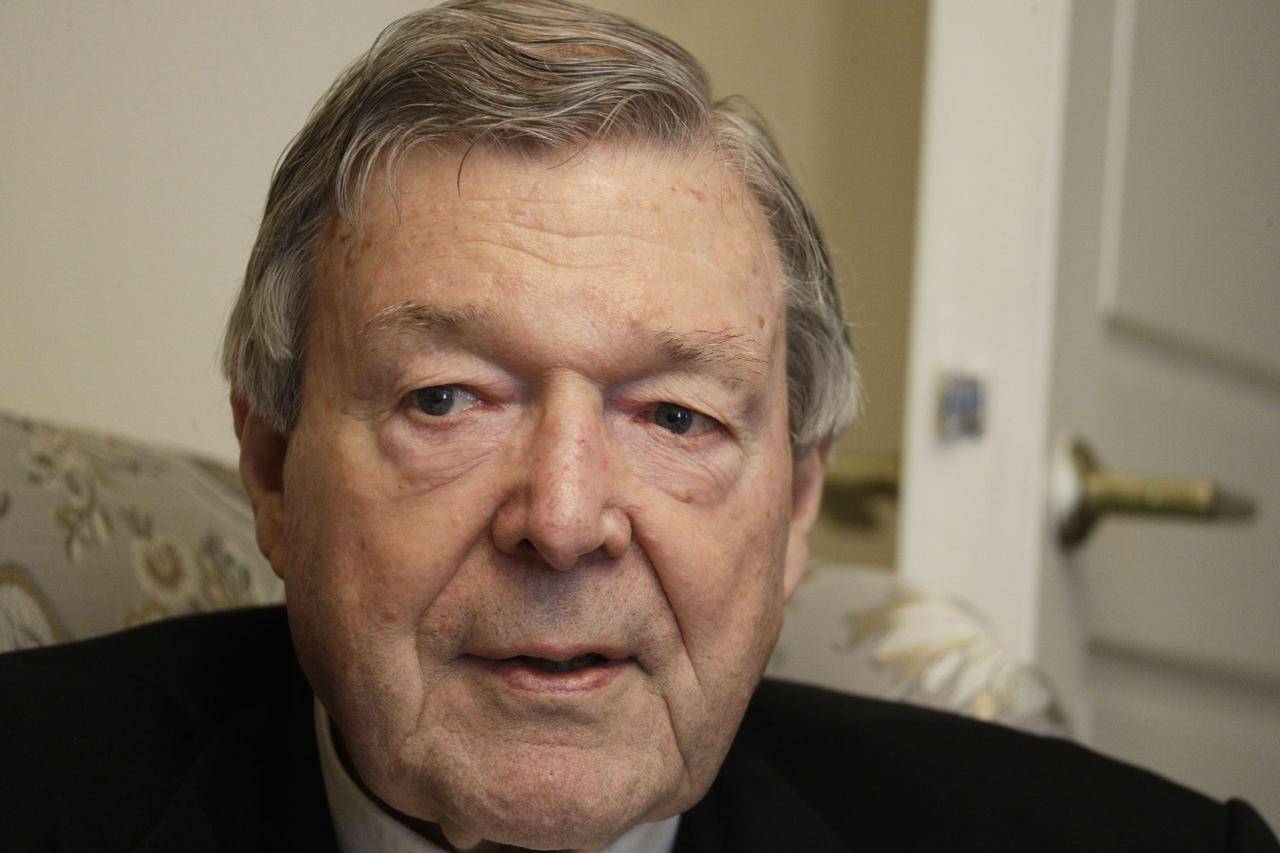In one of our earliest talks over the years, the late Cardinal Francis George of Chicago gave a precocious young reporter a valuable piece of advice: “Be careful about using the word ‘unprecedented’,” he said. “In the Catholic Church, everything has happened at least once.”
Thus it is that as the bishops of Chile arrive in Rome this weekend for meetings with Pope Francis Tuesday through Thursday on that country’s clerical sexual abuse crisis, we can certainly call the summit “extraordinary,” but not a complete novelty. In fact, we’ve seen a version of this show before: April 23-24, 2002, when all the residential cardinals in the United States, along with the top two officers of the U.S. bishops’ conference, were summoned to Rome to discuss the abuse scandals exploding in America.
Looking back, that summit turned out to be a watershed.
It may be difficult to remember now how all-compassing the atmosphere of crisis was in that moment. In early 2002, the Catholic sex abuse scandals, initially centered on Boston and then rippling across the country, appeared on the front page of the New York Times forty-one days in a row, eclipsing the previous record set during the peak of the Watergate scandals in 1974 that brought down the Nixon administration.
During the 48 hours of the summit, satellite trucks hired by American TV networks and local stations utterly colonized the Piazza Pio XII, the space just outside St. Peter’s Square where several Vatican offices are located. A viewing platform had to be put up to accommodate all the requests, and given the time difference between Rome and America, it operated virtually around the clock.
Beth Shuster of the Los Angeles Times, noting that some 200 journalists were on hand, compared the scene to the “Camp O.J.” that had sprung up during coverage of the Simpson saga in 1994.
It was a shock for many Vatican personnel, representing their first real encounter with the aggressive and pushy culture of the American press, which for once wasn’t commenting from afar but doing its thing in the precincts of the Vatican itself.
There were surreal scenes along the way, including the site of famed American columnist Jimmy Breslin slumped in the back of the Vatican Press Office, scribbling notes on the back of a paper bag, clearly projecting an air of “I’m not buying it.” Breslin would later produce a book on the scandals, the gist of which you can get from the title – The Church that Forgot Christ.
The Vatican announced on April 15, 2002, that the cardinals had been called to Rome to meet Pope John Paul II and senior Vatican officials. The eight who participated were:
- William Keeler of Baltimore
- Bernard Law of Boston
- Francis George of Chicago
- Adam Maida of Detroit
- Roger Mahony of Los Angeles
- Edward Egan of New York
- Anthony Bevilacqua of Philadelphia
- Theodore McCarrick of Washington, D.C.
By the end of the year, Law would resign in disgrace. The most obvious candidate for the Law of the Chilean situation is Cardinal Francisco Javier Errazuriz, who’s also been accused of turning a blind eye to abuse, although it’s a somewhat apples-and-oranges comparison since Errazuriz is now 84 and retired. At the last minute Errazuriz boarded a flight for Rome, having initially said he wouldn’t come. (His explanation at the airport? “I changed my mind.”)
American cardinals living in Rome at the time also took part: Francis Stafford, then President of the Pontifical Council for the Laity; Edmund Szoka, president of the Government of the Vatican City State; and William Baum, retired.
The cardinals were joined by then-Bishop Wilton Gregory of Belleville, Illinois (now the archbishop of Atlanta) and Bishop William Skylstad of Spokane, Washington, respectively the president and vice-president of the bishops’ conference.
On the Vatican side, an all-star lineup took part:
- Cardinal Joseph Ratzinger, then prefect of the Congregation for the Doctrine of the Faith
- Cardinal Angelo Sodano, then the Secretary of State
- Cardinal Giovanni Battista Re, then the prefect of the Congregation for Bishops
- Cardinal Jorge Medina Estevez, then prefect of the Congregation for Divine Worship and the Discipline for the Sacraments (prior to a motu proprio from John Paul in late 2001, this congregation used to share responsibility for abuse cases)
- Cardinal Dario Castrillon Hoyos, then prefect of the Congregation for Clergy
- Archbishop Julian Herranz, president of the Pontifical Council for the Interpretation of Legislative Texts
- Archbishop Tarcisio Bertone, Ratzinger’s top deputy at the CDF
- Archbishop Francesco Monterisi, Re’s top deputy at Bishops
Basically, it was as complete a gathering of heavy-hitters in John Paul’s papacy as the Vatican ever witnessed at one time. Aside from Ratzinger, most of those other Vatican officials at the time were associated with skepticism about the real scope of the scandals, tending to see them as a press- and lawyer – generated “American problem.”
John Paul received the group in audience on day one and lunched with them on day two, but otherwise let his aides handle the nitty-gritty. In that April 23 audience, however, John Paul delivered words that became emblematic for the reformers: “People need to know that there is no place in the priesthood and religious life for those who would harm the young.”
The American bishops took that as a papal green light for a more aggressive, “zero tolerance” stand on abuse.
In the end, the summit produced two documents: A letter from the U.S. bishops to priests back home, in which they apologized for the fact that “episcopal oversight has not been able to preserve the Church from this scandal,” and a final communiqué outlining areas of agreement between the American prelates and officials of the Roman Curia.
A four-person drafting committee for the communiqué was composed of Castrillón and Bertone for the Vatican, and Skylstad and McCarrick for the Americans. Castrillón and Bertone produced one draft in Italian, while Skylstad and McCarrick produced a text in English. The idea was to combine the two.
The first version to be circulated among the rest of the participants was in Italian, which participants described as “sketchy,” with certain points from the discussion left out and other ideas that had not formed a central part of the two-day meeting included.
The rest of the participants began to react to the Italian draft at the same time that an English version was prepared. Eventually, the cardinals found themselves working from an Italian text and three English texts, none of which was fully accurate.
With the clock ticking and the Vatican press office full of reporters, the cardinals rushed through a version of the communiqué, the contents of which seemed a surprise even to them.
That press conference on April 24 turned out to be something of a farce. It was supposed to be held at 7:30 p.m. but got pushed back to 10:00 p.m. due to editing delays as well as a mini-drama over which cardinals would take part.
It seemed clear that Law couldn’t show up, since his presence would have blocked everything else out of the sky, so in the end it fell to Gregory, McCarrick and Stafford to present the American side – a fairly lame excuse was floated that Law had other things to do that evening, and that had things started on time he might have been there.
That press conference was carried live on virtually every American TV network, and it probably won’t be remembered as a high point in Church communications.
For one thing, despite repeated pledges from American bishops prior to the summit that empowering laity was a key to recovery, there was no mention of it in the final document. When I pressed the panel as to why, McCarrick replied, “That’s not in there?” and then suggested it was an editing error – raising the obvious question of why something allegedly so critical could have been left on the cutting room floor.
The document also included a controversial line calling for a tougher approach against “individuals who spread dissent and groups which advance ambiguous approaches to pastoral care.” On background, most Americans said it came from the Vatican and distanced themselves from it before the ink was dry.
“Forget it,” one American participant said at the time. “We all thought it had been dropped from the final communiqué, but with the chaos, it stayed in.”
The presser included another embarrassing moment, when McCarrick said at one point that John Paul was “turned on by children.” He meant, of course, that the pope genuinely loved young people, but in context it wasn’t exactly the most euphonic turn of phrase.
“We should have stayed an extra day,” another participant said. “With a good night’s sleep, we could have ended up with something clearer. But everyone had flights, and we ended up with a version that was not fully reflective of our discussions and the Americans’ proposals.”
(The Vatican seems to have learned that lesson, setting aside three days, not two, for the Chilean summit.)
In the end, most American participants came away with a clear realization that while they had a friend in Ratzinger, who would later go on to become Pope Benedict XVI, they couldn’t rely on the Vatican to take lead on combatting the crisis, which helped solidify momentum for the strong “zero tolerance” policies they would adopt at their Dallas meeting in June 2002.
A few days later, Herranz would give a speech in Milan in which he criticized a climate of “exaggeration, financial exploitation and nervousness” in the United States, illustrating what the Americans were up against.
As it turns out, a delegation of American prelates would soon be back in Rome in late October 2002, after Vatican officials initially suggested the Dallas policies wouldn’t survive canonical muster. (Because they involved changes to Church law, the Americans needed Vatican approval.) Ratzinger would prove critical in saving the heart of the American policy.
In retrospect, that April 2002 summit probably marked the beginning of the end for the “denial” camp in the Vatican on the abuse scandals. After the election of Benedict in April 2005, most of those figures were replaced, and their successors, influenced in part by the shock of the American scandals, would be more sensitive to the case for reform.
Today, the problem on the Vatican side isn’t denial, but some who think the problem, however real and tragic, is basically resolved and it’s time to move on. Chile is a reminder of why that’s a false conception, and it’s likely not to be the last such crisis the Church will have to face.
It remains to be seen whether this week’s summit will have profound consequences, either for Chile or the Vatican. For now, it’s enough to remember another time a country’s Catholic leadership came calling in Rome amid an abuse scandal – because, as it turns out, those were 48 hours that shook the Church.















